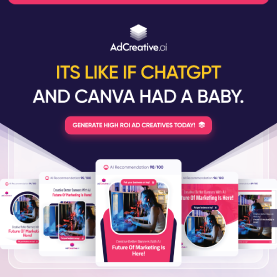The Core of Personal Branding: Authenticity and Consistency
Let’s get one thing straight—your personal brand isn’t just a logo, a catchy tagline, or a well-curated Instagram feed. It’s the gut feeling people have when they hear your name. It’s the trust you build, the expertise you demonstrate, and the values you consistently embody. And trust me, if you’re not actively shaping your brand, others are doing it for you.
I learned this the hard way. Back when I first started creating content, I was all over the place. One week, I was sharing deep-dive business insights; the next, I was posting random lifestyle content. My audience had no idea what to expect, and honestly, neither did I. My engagement suffered, my credibility wavered, and I felt like I was spinning my wheels. It wasn’t until I doubled down on my core strengths—entrepreneurship, digital growth, and no-BS business advice—that things started clicking.
So, what’s the lesson here? Consistency and authenticity are non-negotiable. If you want to build a personal brand that actually moves the needle, you need to get crystal clear on three things:
- Your Core Message: What do you want to be known for? Not in a vague, “I’m passionate about helping people” kind of way. Be specific. Are you the go-to expert for bootstrapping startups? A master of viral content? The person who simplifies complex digital marketing strategies? Lock that in.
- Your Target Audience: Who are you speaking to? If your answer is “everyone,” you’ve already lost. The most successful personal brands don’t appeal to the masses; they resonate deeply with a specific group of people. Find your tribe and speak directly to their needs, struggles, and aspirations.
- Your Unique Edge: What sets you apart? The internet is flooded with experts, but the ones who win have something different—a unique perspective, a distinct voice, an unforgettable storytelling style. Maybe you blend humor with hardcore business insights. Maybe you’re brutally honest when others sugarcoat the truth. Whatever it is, lean into it hard.
The more consistently you show up as you, the more trust you’ll build. And in the digital world, trust is the currency that drives everything—opportunities, collaborations, and ultimately, success.
Your personal brand isn’t built overnight, but every piece of content, every interaction, and every value-driven move you make compounds over time. So, what’s your brand saying about you today? If it’s not the message you want, it’s time to start rewriting the script.
Understanding Your Personal Brand
What is a Personal Brand?
Your personal brand isn’t just a logo or a catchy tagline—it’s the way the world sees you. It’s what people say about you when you’re not in the room, the vibe you give off through your content, and the unique value you bring to the table. Think of it as your reputation, wrapped in a strategic, intentional package.
Everyone has a personal brand, whether they realize it or not. The real question is: Are you shaping it intentionally, or is it forming on its own? The most successful entrepreneurs, influencers, and creators—people like Gary Vaynerchuk, Marie Forleo, and MrBeast—didn’t stumble into their personal brands. They built them with purpose, leveraging their expertise, personality, and unique perspectives to carve out a space that’s unmistakably theirs.
Why Personal Branding is Non-Negotiable
Let’s get real: If you’re in the content game, your personal brand is your currency. It’s what makes people choose you over someone else offering the same service, product, or insight. In an online world where attention spans are shorter than a TikTok clip, standing out isn’t optional—it’s survival.
Here’s why personal branding is an absolute must:
- Differentiation: The market is flooded with creators. Your brand is what makes you the obvious choice.
- Trust & Credibility: People don’t just buy products or services—they buy into people. A strong personal brand builds authority and fosters trust.
- Attracting Opportunities: Whether you’re looking for partnerships, speaking gigs, or premium clients, the right brand positioning brings the right doors knocking.
Assessing Your Current Personal Brand
So, how do you know where you stand? It starts with brutal honesty.
Ask yourself:
- What do people really say about me and my work?
- What does my online presence (website, social media, content) communicate?
- Do my values, skills, and strengths come through clearly in how I present myself?
A great exercise is to Google yourself. Yep, it feels weird, but what you find (or don’t find) is a reality check. If the results don’t align with the brand you want to project, it’s time for a strategic overhaul.
Remember, personal branding isn’t about being someone you’re not. It’s about amplifying the best, most authentic version of yourself—consistently, intentionally, and with purpose. Your audience is waiting. Time to show them why you are the one they should follow, trust, and buy from.
When I first set out to build my brand, I made the mistake of trying to be everything to everyone. Let me tell you, that’s a one-way ticket to burnout and frustration. It’s easy to get caught up in the idea that your personal brand should appeal to the masses, but trust me—if you’re speaking to everyone, you’re speaking to no one. This is where defining your Unique Value Proposition (UVP) becomes a game-changer.
Your UVP is like your personal secret sauce. It’s the combination of your skills, strengths, and passions that make you uniquely suited to serve a specific audience. So, how do you uncover it? Well, I started by asking myself some tough questions. What am I truly passionate about? What do I excel at? How do I add value in ways that others don’t? When I finally sat down to answer these, it became clear: I was all about strategic growth. Whether it’s growing a business or an online presence, that’s where I shine.
Now, once you’ve nailed down your UVP, the next step is to focus on your target audience. It’s tempting to think that your personal brand should be for everyone, but that’s a recipe for spreading yourself too thin. I learned this the hard way. When I started narrowing down my audience to entrepreneurs and small business owners, everything clicked. Suddenly, my content was more focused, my messaging more consistent, and my growth more organic. Your target audience isn’t just a group of people; they’re a community that you want to influence and serve. Ask yourself: Who are they? What are their challenges? How can you make their lives easier or better?
After you’ve got that, it’s time to craft your brand message. Think of this as the elevator pitch for your personal brand. It should be clear, concise, and resonate with your audience’s needs and desires. For me, it’s something along the lines of, “Helping entrepreneurs scale their businesses through strategic marketing.” It’s not fancy, but it tells people exactly what I do and who I do it for. If you can distill your message into one sentence, it’s going to stick with people and keep them coming back for more.
Here’s the thing: defining your brand identity isn’t a one-time exercise—it’s an evolving process. Your UVP, target audience, and brand message will grow as you grow. But the key is to start with clarity, stick with it, and be authentic. Trust me, once you get these pieces in place, everything else will fall into place.
Section 3: Establishing Your Online Presence
Creating Your Personal Branding Hub
Your website or blog is your digital headquarters. Include:
- A professional bio.
- A portfolio showcasing your work.
- Contact information for networking or collaboration opportunities.
Optimizing Social Media Profiles
Each social platform has its strengths. Ensure your profiles:
- Use a high-quality profile photo.
- Feature a compelling headline or bio.
- Link to your website or primary content hub.
Building Authority with Content
Content is king when it comes to establishing expertise. Consider:
- Blogging: Share insights, how-tos, and industry trends.
- Video content: Create tutorials, Q&A sessions, or thought pieces.
- Podcasts: Host discussions on topics you’re passionate about.
Section 4: Growing and Nurturing Your Network
Engaging with Your Community
Building a brand isn’t a solo journey. Engage actively:
- Comment on and share content from others in your industry.
- Participate in forums, groups, or live events.
Leveraging Professional Connections
Strengthen relationships with:
- Mentors who can guide your journey.
- Peers for collaborations.
- Followers who can amplify your message.
Consistency in Communication
Be consistent in:
- Posting frequency.
- Tone and messaging.
- Responding to comments or direct messages.
Section 5: Positioning Yourself as an Expert
Public Speaking and Media Opportunities
Share your expertise through:
- Speaking engagements at conferences or webinars.
- Guest appearances on podcasts or blogs.
Showcasing Your Achievements
Highlight accomplishments with:
- Case studies or testimonials.
- Awards, certifications, or recognitions.
Continuous Learning and Skill Development
Stay at the top of your game by:
- Taking relevant courses.
- Attending workshops or seminars.
- Keeping up with industry trends.
Section 6: Managing Your Brand Reputation
Monitoring Your Online Presence
Use tools like Google Alerts or social media dashboards to track:
- Mentions of your name.
- Feedback or reviews about your work.
Handling Criticism and Negative Feedback
Address criticism professionally:
- Respond politely and offer solutions.
- Learn from constructive feedback to improve.
Staying Authentic
Authenticity is the cornerstone of a successful personal brand. Avoid:
- Over-polishing your image to appear perfect.
- Straying from your core values and mission.
Conclusion
Building your personal brand is an ongoing process that requires reflection, effort, and adaptability. By following this playbook, you’ll create a brand that resonates with your audience, elevates your professional presence, and unlocks new opportunities. Start defining and sharing your story today — the world is waiting to hear it!


